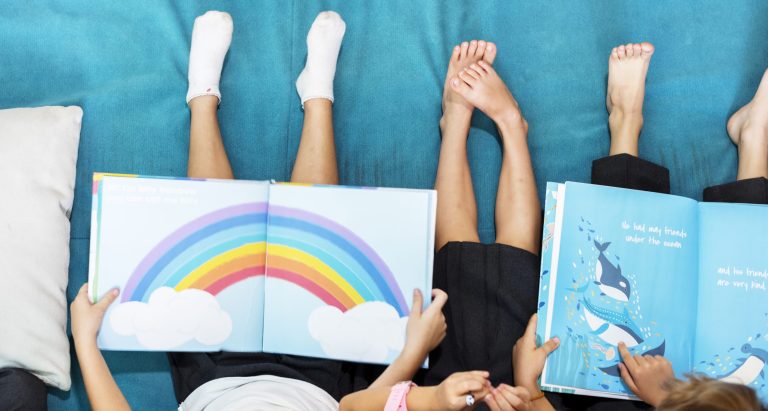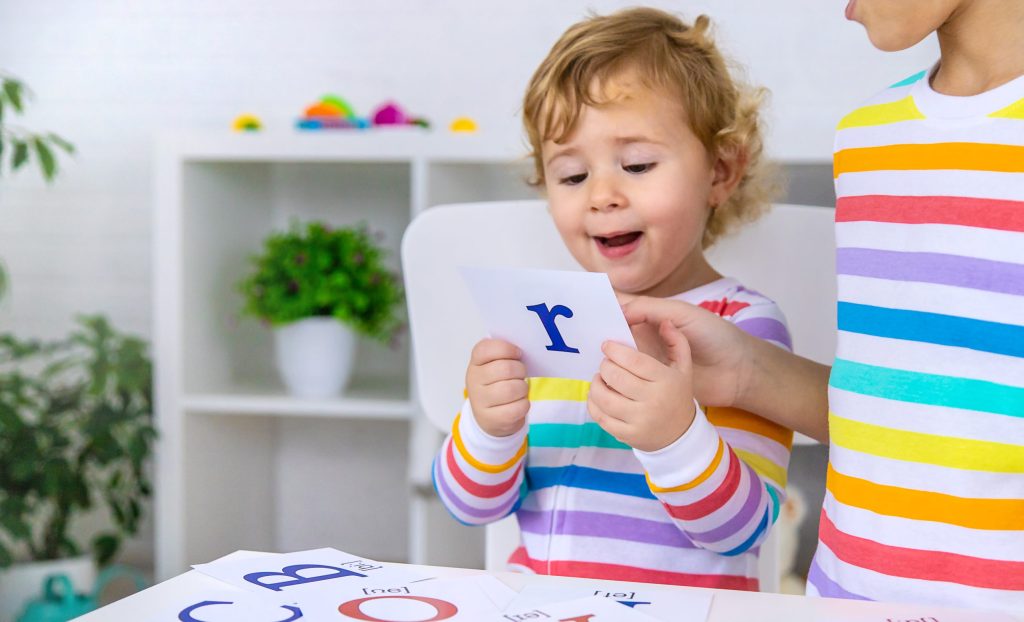Concepts of print or concepts about print involve understanding how print, written language and books work and their conventions. It’s about understanding how print is different from images and how we use it.
Concepts of print can be seen as a set of rules that are followed by readers and writers so that we can understand text the way it is intended. It is also about the words used to describe those concepts.
Print Referencing
- Using verbal and nonverbal cues during reading to encourage a child’s attention to and interactions with print (Justice & Ezell 2004)
Concept of Text
- Print communicates a message. Words we say can be written down.
- Early experiences with familiar logos and items can help develop concepts of print, e.g. the big ‘M’ for McDonalds or familiar food labels.
Concept of a Book
- Orientation of the book – Where is the back cover and front cover? Top and bottom of the page?
- Handling a book – Holding it the right way up, turning pages one by one
- Where/who is the title, author, illustrator?
- There might be other information on the cover or first pages (blurb, publisher, logo etc)

Directionality
- Begin at the front of the book and end at the back.
- Turn pages left to right
- Read pages from left to right
- Read words from left to right
- Sweep across the page line by line from left to right, then return to the left for the next line of text
- Begin at the top of the page and end at the bottom of the page
(Victoria Department of Education 2022)
Conventions
- Words are separated by spaces
- We use punctuation and numbers in print as well as alphabetic letters
- Sentences start with a capital letter and end with punctuation
- Words written down are usually read the same way (apart from homographs like does – female deer – and does – 3rd person form of ‘do’)
- There are spaces between words to make it easier to read.
- Different kinds of books can be organised in different ways – picture books vs chapter books vs factual books
Alphabet Knowledge
- Names of each letter
- Order of the alphabet – ABCs
- Upper case and lower case letters
- Letter-sound correspondence. Letters have sounds that are usually associated with them.
- Letters are combined to make words

Vocabulary Related to Books and Print
Knowing the words associated with books and print is called ‘metalinguistic awareness’
- Title – name of the book; author – person who writes the words; illustrator – makes the pictures
- Word – group of letters that spell something
- Words can be long or short. Some short spoken words can actually be quite long when written down (e.g. cough).
- Some long words are made up of syllables – caterpillar = 4 syllables
- Words are combined to make sentences.
- A sentence is a group of words that communicates an idea
- Sentences are combined to make paragraphs etc.
Link between concepts of print and phonological awareness
Being able to recognise and name letters, along with phonological awareness and oral language skills, are important predictors of early reading success.
How to Develop Concepts of Print
- Read books with your child every day, making it fun.
- Preview the book by holding it closed and looking at the front and back cover, pointing out the names of the author and illustrator.
- Talk to your child about the picture on the cover. Try to predict together what the story is about and what words might be found in the book.
- Talk through the process of getting the book ready to read (Is this right? Oh, it’s upside down. Oh dear that’s the back cover).
- Move your finger under each word as you read.
- Use your finger to show different parts, directionality of reading, return sweep.
- Read books with different fonts and types (bold, large, italic).
- If a book has only a few words on a page, point to each one as you read it.
- Build a print-rich home or classroom with labels, posters, art projects.
- Highlight particular sounds or letters within the text.
- Point out features of the text while reading, particularly with familiar books.
- Identify the first letter/sound of word.
- Show upper and lower case letters.
- Occasionally ask your child where to start reading or to find a familiar word.
- Read alphabet books, play with alphabet letters, make letters out of playdough.
- Encourage your child to recognise their own name and words with the first letter of their name.
- Write your child’s name and encourage them to copy/trace.
- Make or share shopping lists, warning signs, shop signs, labels on pantry items.
Children develop concepts of print through shared book reading with caregivers while they model and share concepts of print.
The ability to understand how print works does not happen unaided. It requires the active intervention and support of adults and other children who point out letters, words, and other features of text that surround us every day.
Did you know? Twelve world languages are written right to left. These are mainly middle eastern languages, the most common being Arabic. There are even some languages that are sometimes written top to bottom including Chinese, Japanese and Korean dialects.

